

Unlocking the Secrets of Fact Families: Your Child’s Path to Math Success!
Learning about fact families, also known as mathematical trios, is like discovering the secret bond between best friends who always stick together. Instead of just dealing with individual numbers, mathematical trios show us how numbers work together in groups of three, just like a trio of friends who rely on each other.
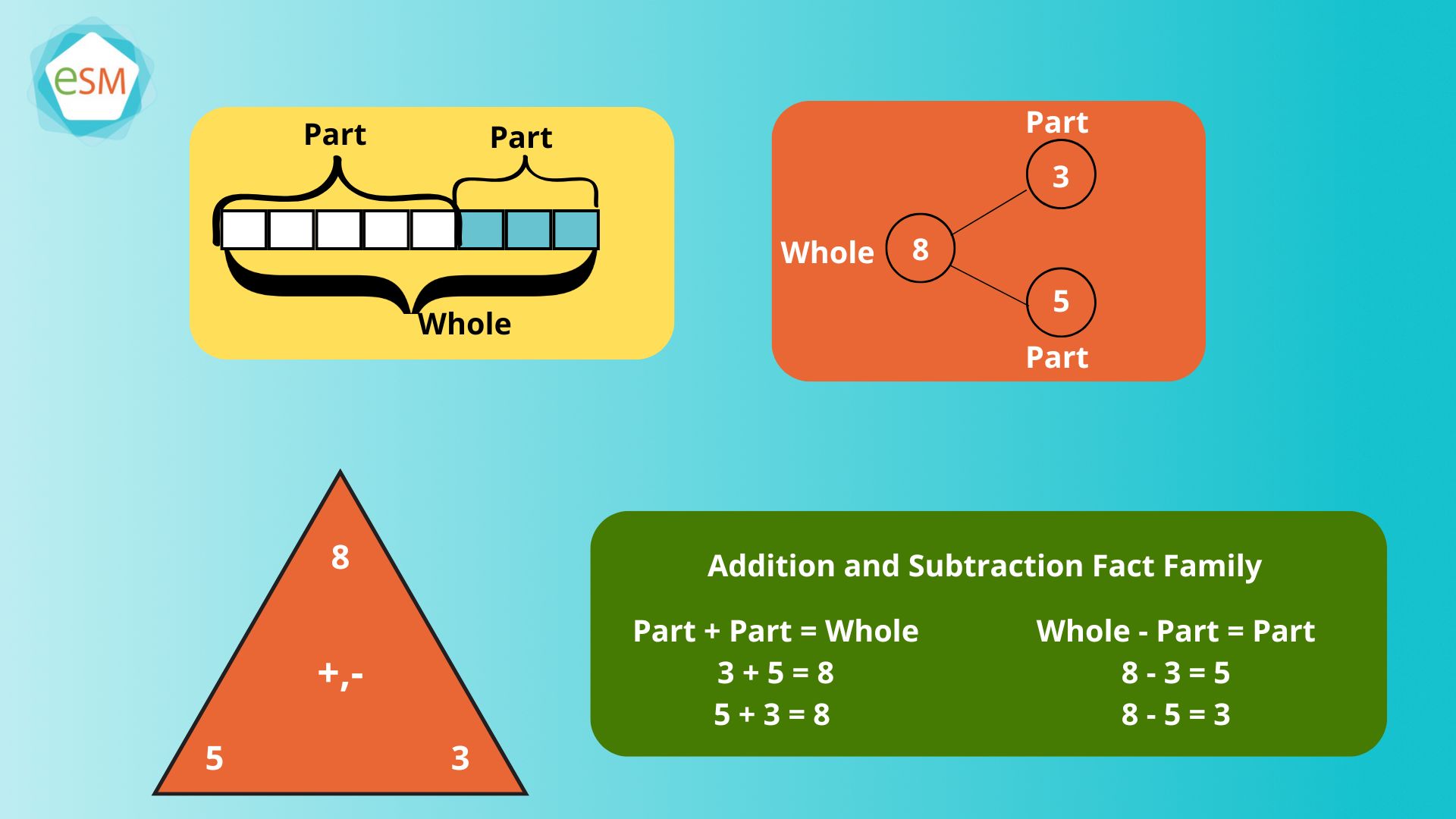
If you're just starting to explore mathematical trios, you're about to embark on an exciting journey! In this article we’ll explain what math fact families are all about. We'll guide you through the process step by step, making math both fun and understandable for you and your child.
What is a mathematical trio? Imagine a bustling fruit stand with apples, oranges, and bananas. Each type of fruit represents a different number, and we'll demonstrate how these fruits can be mixed and matched in different ways to form various mathematical trios.

When children grasp how mathematical trios operate, math learning becomes smoother and problem-solving speeds up! Instead of simply memorizing numbers, they start seeing how numbers connect, spotting patterns, and doing mental math. Understanding mathematical trios gives kids a clearer view of math's big picture, making problem-solving a breeze!
So, let’s delve deeper into the intriguing realm of numbers. Investigating fact families for addition and subtraction is like uncovering the secret patterns behind these math operations. In this article, we're going to be your guides on this exciting adventure of unraveling the mysteries of mathematical trios!
E-Singapore Math Introduces Fact Families Early
Unlike the usual Grade 1 curriculum, E-Singapore Math introduces the concept of number trios as early as Kindergarten. Teaching mathematical trios up to 5 and 10 helps young learners see how numbers can be combined and separated in various ways. It’s like planting seeds for big math ideas to grow!
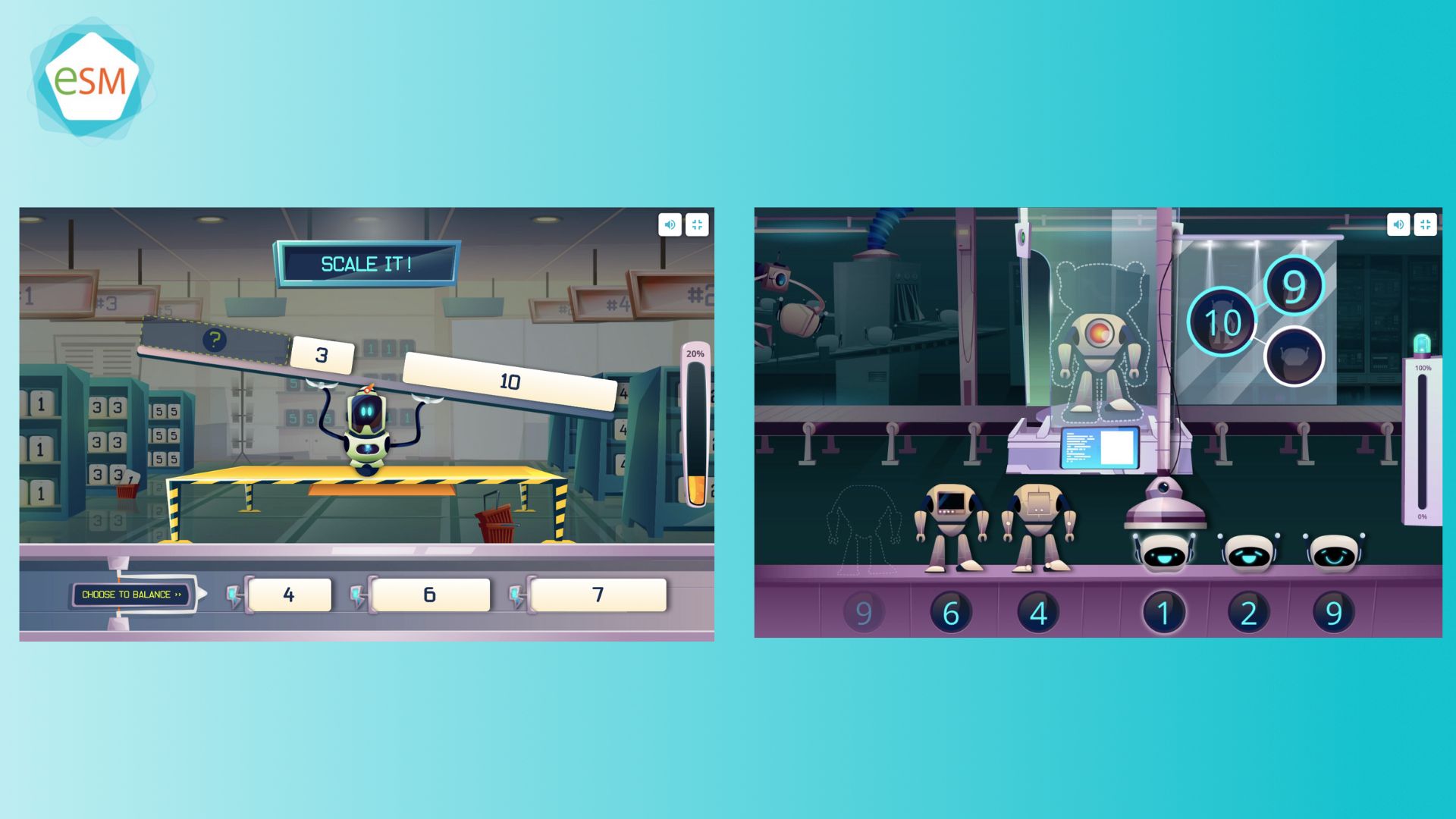
In our math adventures, we use exciting activities like number bonds to show how numbers are like puzzle pieces that snap together perfectly. Even though it might seem simple for adults, it's a big idea for kids to grasp. That's why we spend loads of time playing and practicing with number trios in Kindergarten and Grade 1.
What is a fact family in math?
Fact family is a group of three numbers that are like teammates, always working together. Think of it this way: imagine again that you're at a fruit stand with apples, oranges, and bananas. Each fruit represents a different number. In a mathematical trio, these numbers are like the fruits, each playing a unique role. Just as apples, oranges, and bananas can be combined and separated in various ways to create different fruit salads, numbers in a mathematical trio can be added and subtracted to make different number sentences. So, when we talk about mathematical trios, we're referring to these groups of numbers that collaborate in math, just like the fruits in a fruit salad!
In Kindergarten, kids explore and learn how to make a fact family in math using numbers up to 5 and 10, just like sorting toys into different boxes. Then, as they move to Grade 1, they discover that mathematical trios are all about adding and taking away with the same group of numbers. It's a bit like making sandwiches with the same ingredients but in different combinations! Each mathematical trio has two addition sentences, where we put numbers together, like 5 + 4 = 9 and 4 + 5 = 9, and two subtraction sentences, where we take away numbers, like 9 - 4 = 5 and 9 - 5 = 4.
Fact Families Triangles
Remember the robot we built with number bonds in Kindergarten? Well, a fact family triangle is a bit like those! Picture a triangle with numbers written inside. The number at the top is like the total number for the head and body, and the two numbers at the bottom are like the head and body we used to get that total.
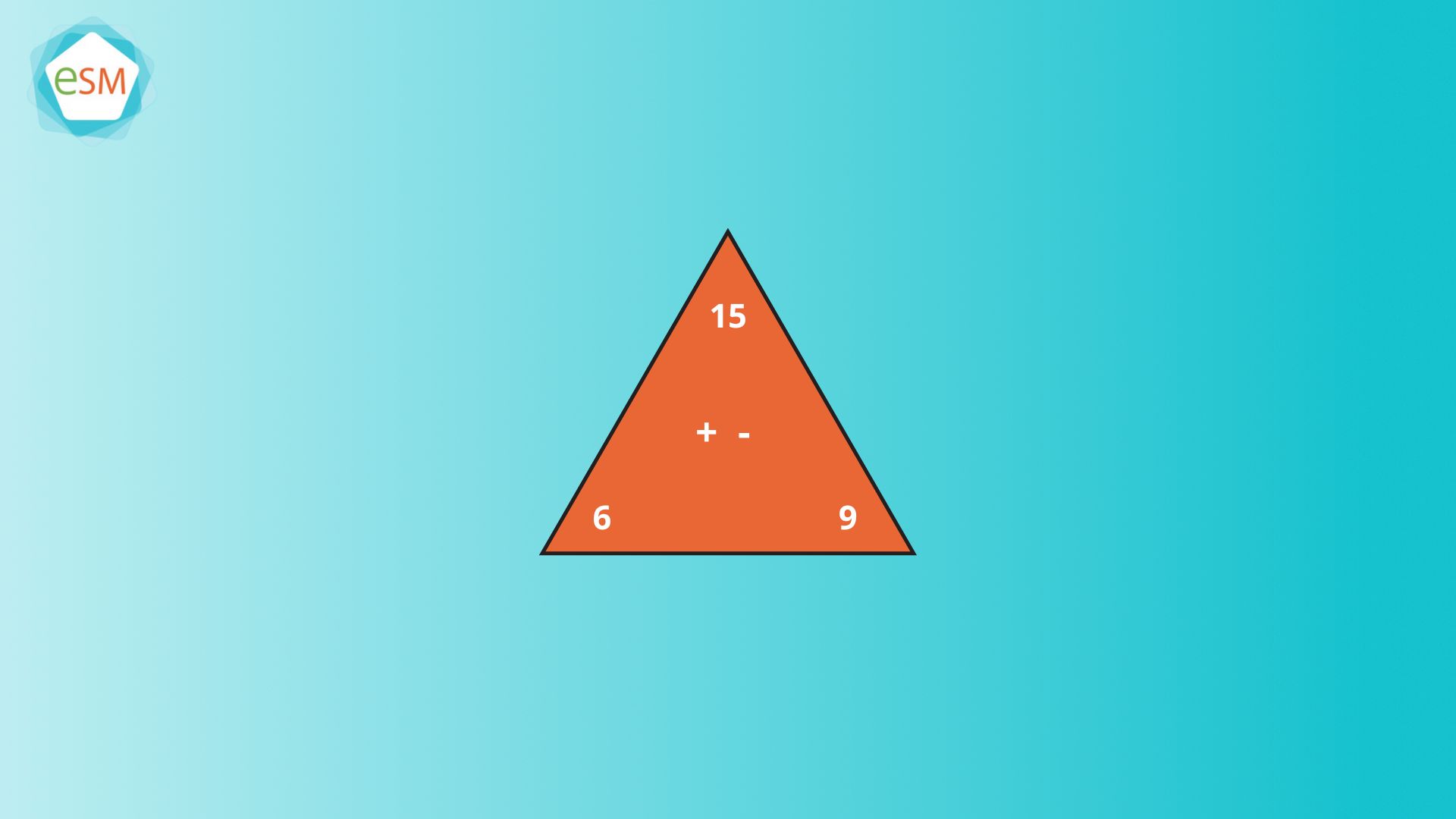
These math fact family triangles are like road maps that help us navigate through the world of numbers! Just like a map guides us from one place to another, these triangles guide us through addition and subtraction. They're like puzzle pieces that snap together, showing us how numbers are related and connected. With these visual guides, understanding math becomes as easy as following directions on a map!
Addition and subtraction fact family triangles
Imagine you have a set of building blocks. With these blocks, you can construct a house by adding more blocks or dismantle it into smaller sections by removing blocks. Addition and subtraction mathematical trios operate in a similar manner! They utilize the same numbers to construct addition and subtraction equations, just like building or deconstructing parts of a house.
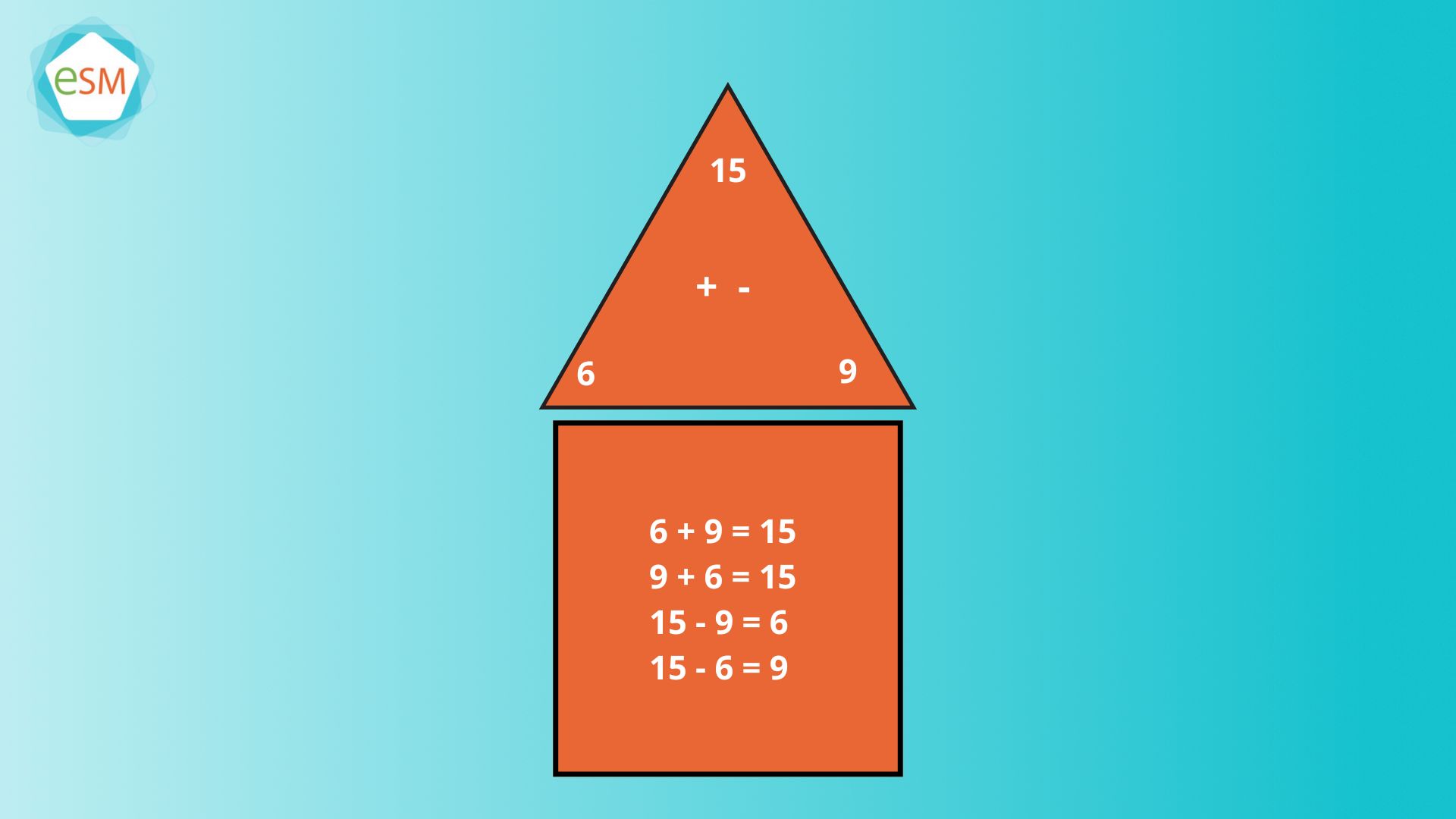
Just like how adding blocks builds a house, adding numbers creates a total. And just like how taking away blocks breaks down a house, subtracting numbers finds the difference. It's like a fun puzzle where the numbers fit together perfectly, helping us understand math in a whole new way! For instance, considering the numbers 6, 8, and 14, we can create addition equations such as 6 + 8 = 14 and 8 + 6 = 14, along with subtraction equations like 14 - 6 = 8 and 14 - 8 = 6. Through consistent practice with these number trios, children can enhance their understanding and retention of addition and subtraction facts.
A Warning About Fact Family Triangles – Students Must Learn Why Before How
In many math programs, addition and subtraction fact family triangles are used for children to simply memorize math facts up to numbers to 20 without truly understanding why they work. However, Singapore takes a different and much more meaningful approach. Why?
Think of math as a giant puzzle. Instead of memorizing where each piece goes, Singapore Math gives you a treasure map instead! Let's tackle a problem like 6 + 6 as an example. If children haven't memorized this math fact yet, it can pose a challenge. They might resort to methods like counting on their fingers or relying on fact family triangles or doubling facts. However, these approaches are not effective problem-solving strategies and can lead to mistakes.
Instead, we employ the number bond technique to break down the problem. This mental math process involves recognizing the number needed to make a 10 with the 6, which is 4, and then splitting the 6 into 4 and 2. Adding 6 and 4 gives us 10, and then adding 10 and 2 yields 12. This approach is more advanced, precise, and utilizes the properties of base 10. It's akin to assembling puzzle pieces to reveal the hidden picture! By employing this method, we not only discover the answer but also understand the underlying logic behind it.
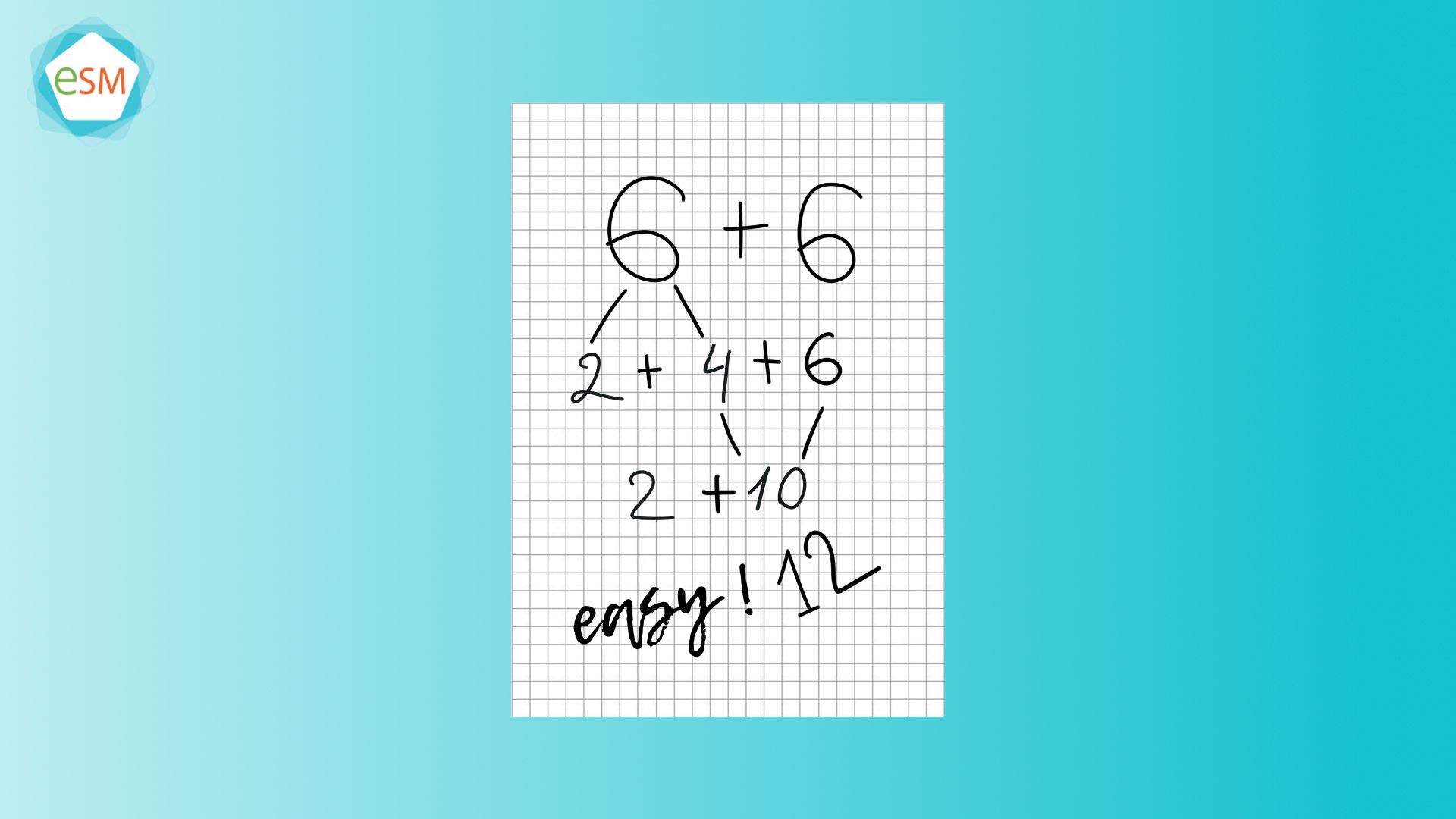
Engaging Openers: Initiating Fact Families with E-Singapore Math Videos
Are you prepared to present mathematical trios to your young learners? We're thrilled to begin! Our instructional videos contain multiple examples of fact family in math. The lessons and exercises aim to assist your students in mastering their math facts through enjoyable activities.
Utilizing E-Singapore Math online videos and interactive fact family math games focused on mathematical trios is a fantastic method to grab students' attention and encourage their active participation. To start exploring addition fact family, you might want to watch our videos together with your child. These videos lay the groundwork for understanding fact families and illustrate the connections between math facts.
For instance, watch fact family subtraction video below. We also use a variety of practice techniques, including online games when working with mathematical trios, and it all begins with meaningful instruction!
Fact Family Practice with Games
Once young learners know definition of a fact family and can manipulate them on their own, it's time to dive into math fact family practice. E-Singapore incorporates games with diverse formats to ensure that practice remains engaging. These games offer interactive and stimulating practice, starting with the most fundamental fact family examples. As your kids consistently practice, they'll become more adept at providing answers more swiftly as they progress.
Exploring Math Families in Your Classroom
Mathematical trios are incredibly enjoyable, and it’s strongly suggested dedicating some classroom time to explore them. Ensuring a solid introduction and incorporating various activities, including fact family math games are excellent strategies to help your students develop fluency with facts effortlessly!
There are numerous approaches to teach this topic, but if you're seeking a ready-made solution, consider subscribing to E-Singapore Math! Whether you're using another program as your core curriculum or looking to enhance your first-grade math lessons in the fall, our resources can seamlessly complement your teaching. Enjoy incorporating our program into your classroom – we’re confident your students will delight in discovering the wonders of mathematical trios!

